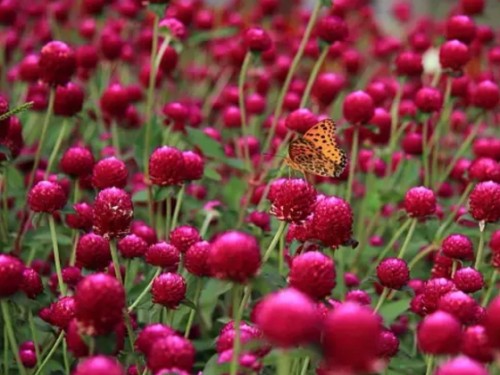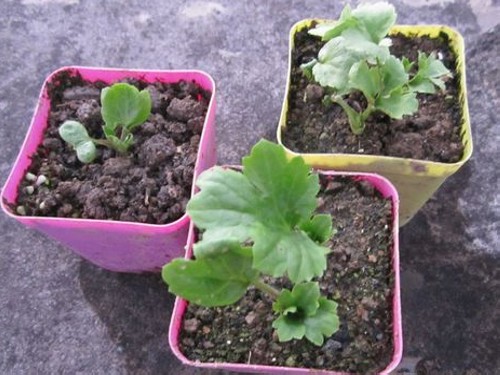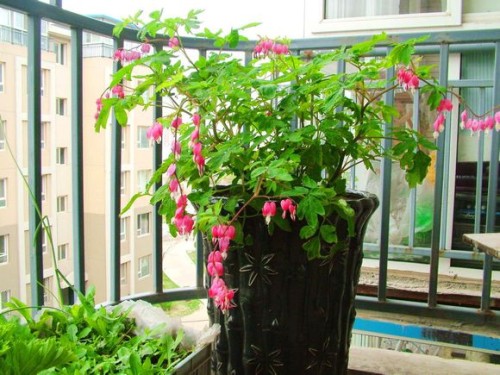How to grow thousand-day red? Planting technique of thousand-day red
Thousand-day safflower is used in medicine, which has the effects of relieving cough and expectoration, relieving asthma, calming the liver and eyesight, mainly treating bronchial asthma, acute and chronic bronchitis, pertussis, pulmonary tuberculosis hemoptysis and so on. In addition, the thousand-day red flower period is long, the flower color is bright, for the excellent garden ornamental flower, is the flower bed, the flower mirror common material, and does not fall after the flower, the color does not fade, still keeps bright. The flower head remains unchanged for a long time. It can be used not only as flower beds and bonsai, but also as flower baskets and other ornaments. Can also be used as lawn edge and flower bed, flower border edge edge material, can also be potted for scenic spots or garden layout, but also a good material for flower arrangement.

So, how to grow thousand-day red? Next, I would like to introduce the planting technology of thousand-day red.
To breed:
Qianrihong was propagated by sowing method, the optimum temperature for germination was 16-23 ℃, germinated in 7-10 days, and sowed in open-field seedbed from March to April in spring. Because the seeds are covered with plush and stick to each other, insert them into the sand and try to sow them. It can also cut the robust shoot 10CM from June to July and insert it into the sandy soil to keep the humidity and take root in about a week. Soak the seeds in warm water to promote budding before insertion. The method is to wrap the seeds with gauze, put them in a shallow basin, spray them with clean water 1-2 times a day, and put them in an environment of about 20 ℃. After the seeds germinate, the fine soil is mixed and sown in the seedbed or basin to strengthen the fertilizer and water management. Transplant when six leaves come out, or live broadcast.
Transplanting:
When the root system of cuttings grows to 0.5 cm to 1.0 cm, it can be transplanted into the pot. if the pot is too late, the seedlings will grow weak in the unnutritious sand, affecting the future growth and development. When the sowing seedlings grow 3-4 true leaves, they can be transplanted into the pot. Tile basin should be selected for planting, and the drainage performance of tile basin is better than that of rubber basin. It is generally planted in 6-7-inch earthen pots with 3 plants in each pot. Because Qianrihong does not have strict requirements on the environment, but it likes sunshine, hot and dry climate, and is sensitive to water and fertilizer, it is necessary to do a good job of watering, fertilization, coring, light, temperature and other technical work in cultivation management according to its growth characteristics.
Watering:
Timely, appropriate and reasonable watering should be carried out according to the changes of the weather, generally less or no watering in cloudy and rainy days, more watering when the temperature is high and evaporation, otherwise less watering, watering thoroughly, usually pay attention to the phenomenon of stagnant water in the basin, if it is found that the stagnant water in the basin should be dealt with in time, otherwise it will cause rotten roots, leaves withered and yellow, causing plant death.
Fertilization:
About 7-10 days after planting, 0.5% urea solution can be used to apply the first fertilizer, and then once a week, the concentration can be gradually increased or 0.6%-1.0% compound fertilizer can be added. Sprinkle water on the leaves immediately after fertilization, so as not to damage the leaves. During the growing period, we should apply less nitrogen fertilizer and more fertilizer based on phosphorus and potassium, such as chicken manure, peanut bran and so on. When fertilizing, we should pay attention not to apply too much, too much root burning is easy to cause plant death, at the same time, each fertilization should wait until the pot soil is dry or loose, and then apply fertilizer in time, so as to prevent fertilizer from burning leaves, causing leaves to wither and rot, and so on.
Plastic surgery:
The first coring can be carried out when the red seedlings grow to 10-12 cm, leaving 1-2 nodes on the main stem, and then three pairs of true leaves can be removed for the second time. The purpose of coring is to promote the plant to be more branched, effectively control the plant height and plant type, and make it grow short and strong. When shaping and pruning, attention should be paid to the circle shaping of the plant, so that the thousand-day red has a higher ornamental value. When the plant is formed, the flowering period can be effectively controlled by coring the branches.
Time: 2019-05-25 Click:
- Prev

Planting method of Ranunculus chinensis
Ranunculus flower also known as celery leaf peony, Persian Ranunculus, Ranunculus family perennial corm flowers. Buttercup flowers are large and beautiful. They are often planted under trees, in lawns, and in the shade of buildings. They are also suitable for cut flowers or potted plants.
- Next

How to grow purse peony-the planting method of purse peony seed
Purse peony originated in China, because its leaves are like peony, there are a string of purse-shaped flowers on the pedicel, so the name purse peony, is a very ornamental flower plant. It is appropriate to decorate the flower border, flower bed, can also be potted, for promoting cultivation, as cut flowers. It can also be decorated with rock gardens or planted in large areas under the forest.
Related
- Fuxing push coffee new agricultural production and marketing class: lack of small-scale processing plants
- Jujube rice field leisure farm deep ploughing Yilan for five years to create a space for organic food and play
- Nongyu Farm-A trial of organic papaya for brave women with advanced technology
- Four points for attention in the prevention and control of diseases and insect pests of edible fungi
- How to add nutrient solution to Edible Fungi
- Is there any good way to control edible fungus mites?
- Open Inoculation Technology of Edible Fungi
- Is there any clever way to use fertilizer for edible fungus in winter?
- What agents are used to kill the pathogens of edible fungi in the mushroom shed?
- Rapid drying of Edible Fungi

